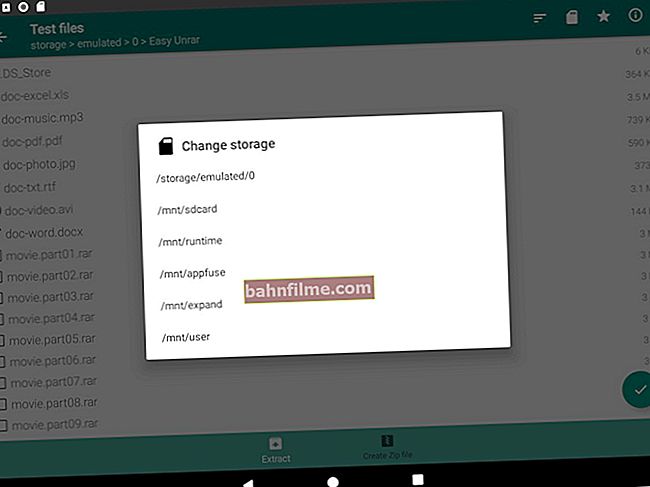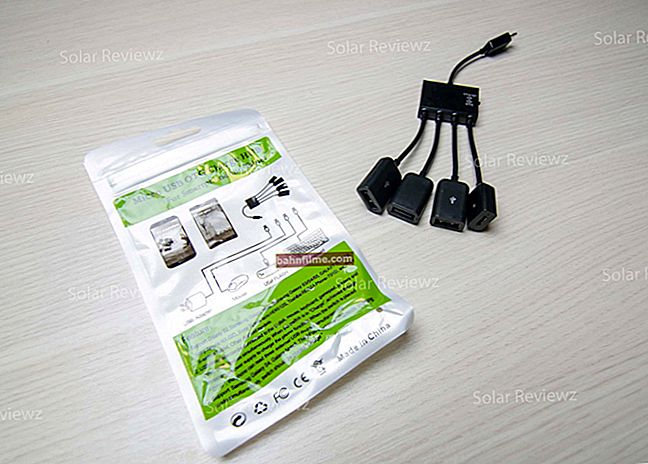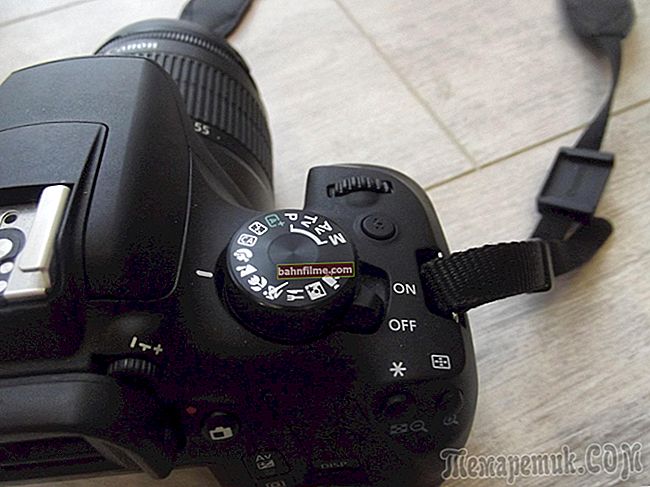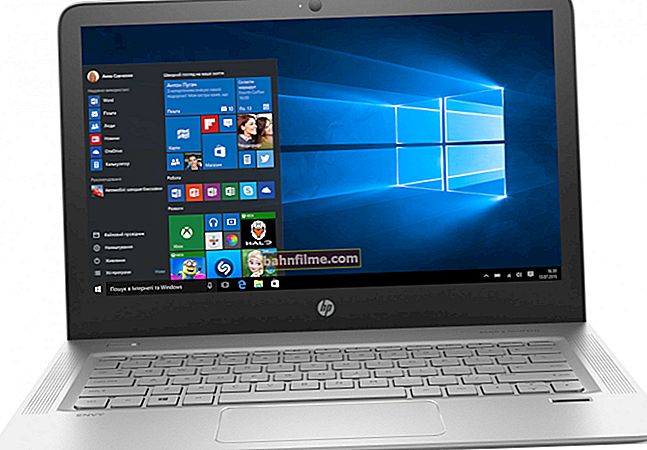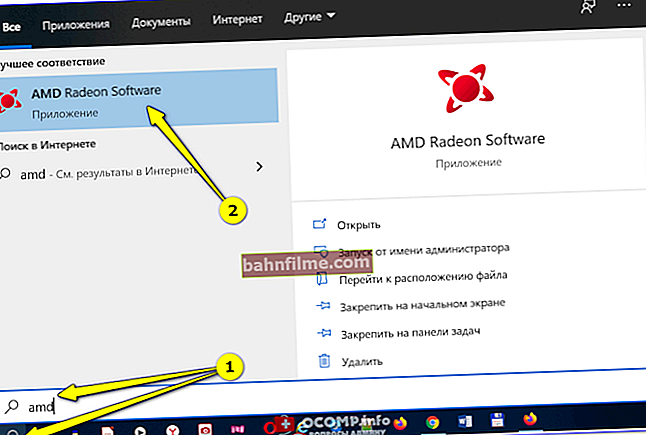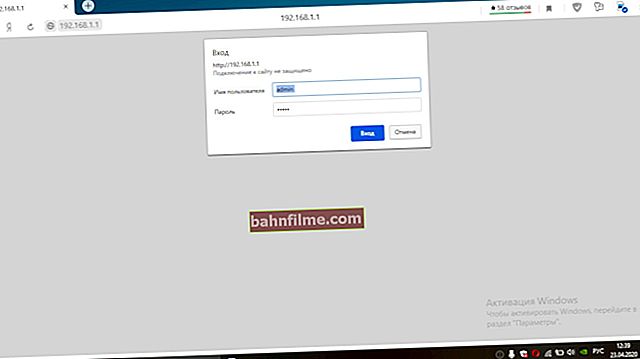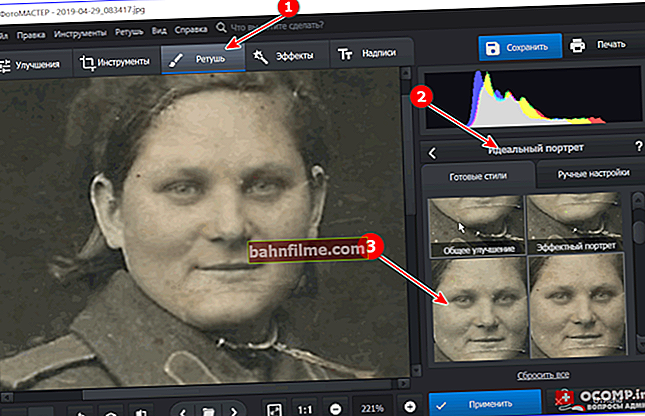 Good time.
Good time.
Today's post will be devoted to overclocking * video cards from nVidia to increase performance (FPS in games). The method below is extremely simple and accessible even to a novice user.
* Note: overclocking means an increase in the nominal frequencies at which the video card operates. On average, due to this, it is possible to increase productivity by 5-10%.
But first I want to make a few caveats:
- Firstly, before overclocking, I recommend trying to increase performance by fine-tuning the video card (what if that will be enough?);
- Secondly, overclocking is not a safe thing, and in some cases it can lead to the failure of the card (although this happens rarely, and as a rule, due to irrepressible user experiments). Nevertheless: do everything at your own peril and risk!
- third, if you expect to increase performance by 2-3 times, then this is impossible (at least, I don’t know what needs to be done for this.). As I said, if you manage to "squeeze out" another 10% - it's not bad!
- fourthly, some are overclocking in order to increase some numbers in the tests. I believe that this is "wrong", and it is worth overclocking the video card only for a real task: for example, the game slows down (low FPS) and you need to raise the FPS to a comfortable level.
Now to the point, let's look at the problem with a real example ... 👇
👉 Important!
By the way, if your video card can handle some kind of game - maybe it makes sense to try the GFN service and run it in the cloud ?! The performance increases significantly!
*
Overclocking a video card from nVidia (step by step)
STEP 1: download the utility
In general, to overclock a video card, we need to increase its frequencies:
- memory (Memory Clock);
- shader blocks (Shader Clock);
- graphics core (video chip / GPU Clock). Usually, its frequency is indicated in the description of the card (for example, 954 MHz for the GeForce GT 710).

Description of a typical video card
👉 Increase frequencies you can use various utilities, but the easiest way to do this is in the nVidia Inspector. It is only for nVidia graphics cards! It does not need installation, the downloaded archive is enough just to extract and run the file nvidiaInspector.exe .

Running the utility
STEP 2: setting up nVidia Inspector
After launching the nVidia Inspector utility, you will see a window with the parameters of your video card. This is already good, so the utility "sees" and recognizes the card and you can move on.
👉 Let's take a look at the whole overclocking process in nVidia Inspector step by step:
- to get started, run the game you need and the utility for viewing FPS (Fraps, for example). This will allow us to "see" with our own eyes what overclocking will give us (in my example, I took the Civilization 4 game). After looking at FPS, minimize the game (Alt + Tab);
- then in the lower right corner of the nVidia Inspector window, click the "Show Overclocking" button (arrow-1 in the screenshot below);
- additional should appear. window on the right. It has three cherished sliders: GPU Clock, Memory Clock, Shader Clock (frequency of the video chip, memory, shaders, respectively);
- now slide the sliders Memory Clock and Shader clock right to 5-10% (Memory: from 800 to 880 MHz; Shader: from 1560 to 1700 MHz);
- press the button "Apply Clock" (arrow-4 on the screenshot below).

NVIDIA Inspector - increasing frequencies
Note: GPU Clock increases automatically when Shader Clock changes. Increasing the frequencies by more than 15% - as a rule, it makes no sense.
👉 To help! How to calculate interest correctly.
Actually, that's it! We raised the frequencies and the video card should now work faster. In my test, I managed to squeeze out about 12% more FPS from the GeForce GT 440 (from 107, now 120). Of course these values are approximate, and in each game the performance can vary greatly (i.e. in one FPS it will grow by 5%, in the other - by 25%)!

Before overclocking - 107 frames (screenshot from the game Civilization IV)

After overclocking 120 frames (screenshot from the game Civilization IV)
By the way, after restarting the computer, the NVIDIA Inspector utility will not start, which means the frequencies will be reset to default. So that every time you boot Windows - the utility starts automatically and overclocks the video card - you need to add it to startup. See link below.
👉 To help!
How to add / remove a program from startup ->
STEP 3: tests and pre-setup
Of course, it is not possible to increase the frequencies of a video card indefinitely (on average 5-15%). Each video card has its own border (determined experimentally ☝), after which it starts to work unstably: distortions in graphics (artifacts), errors, freezes may appear in the game. In general, it is immediately noticeable!
Important! Overclocking usually requires several iterations to find the highest and safest frequencies. By the way, pay attention to one thing: with increasing frequencies, temperatures will also rise, and the video card may start to overheat!
In general, to test the stability of the video card, I recommend using the utilityFurMark... It takes 5-10 minutes. will load the card well and allow you to simultaneously monitor the temperature, and the FPS, and the frequencies.
👉 To help! Testing the video card (temperature / FPS / frequencies) - //ocomp.info/stress-test-videokartyi.html#__FurMark

FurMark - stress test in action (donut spinning)
👉 Supplement!

Video card temperature: how to find out, permissible and critical values of t-ry - //ocomp.info/temperatura-videokartyi-normal.html
STEP 4: how else you can increase the FPS in games
In general, many users mistakenly believe that only through overclocking can significantly speed up the game and raise the FPS. In fact, there are a couple more important points (which can give much greater results)!
👉 1) Graphics card driver settings
A lot depends on the driver and settings. Therefore, firstly, I would recommend checking if it is updated with you, and if all the necessary game components are installed in Windows (the easiest way to do this is using the Driver Booster utility).

Update everything - game components, sound and game devices, etc. / Driver Booster
Secondly, note that in the video driver control panel (not only for nVidia) in the 3D parameters, you can set the priority for the card: for performance or image quality. If the slider is completely unscrewed for performance, it is possible to add another 5-15% FPS (moreover, the difference in image quality may not be noticeable to the eye!).

NVIDIA Control Panel
And, thirdly, there are a number of parameters, by changing them in manual mode, you can "lower" the image quality (produced by the video card), but gain a few more percent. See link below ...
To help! How to improve the performance of the NVIDIA graphics card in games: setting the video driver - //ocomp.info/kak-povyisit-proizvoditelnost-videokart-nvidia.html
👉 2) Game settings
In addition to the video card settings, also pay attention to the game parameters. Changing a number of settings - you can significantly speed up it. I would recommend playing around with:
- the resolution of the game (the lower - the more FPS and the smoother the picture);
- quality of textures;
- shadows, details of water, fog, horizon range;
- detailing the landscape;
- vertical sync (in some games it is better to turn it off).

Graphics settings for WOW Legion
It often happens that by turning off shadows and changing the horizon distance, the number of FPS doubles (without any overclocking!). Of course, each game has its own characteristics, which are better to look for in specialized forums.
These are the pies ... 👌
*
Additions on the topic are welcome ...
Good luck!
👋

